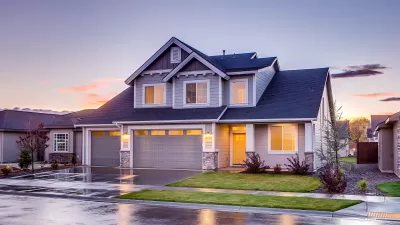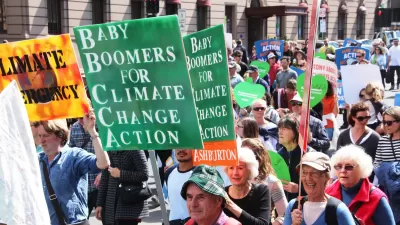Earlier this week, Eric Klinenberg spoke with PBS' Newshour about his new book, "Going Solo: The Extraordinary Rise and Surprising Appeal of Living Alone", and the biggest social change of the last 60 years that we've failed to adequately recognize.
The subject of Klinenberg's book is the "Singleton", who represents the dramatic rise in single adults, and adults living alone since 1950. In that year, 22% of American adults were single, and 4 million lived alone. Today, more than 50% of adults are single, and 31 million live alone.
Ray Suarez, with the Newshour, quizzes Klinenberg on the causes for, and implications of, this profound demographic shift. While the paths to a single life may be diverse, Klinenberg notes that, "people who live alone are opting to do so. Now, they might not aspire to be on their own, but they all have other choices available to them, really regardless of what age they are."
Of interesting consequence for the physical environment is that cities are much better equipped to accommodate singletons. However, "as our society ages and the boomer generation begins to age alone, we will find that our housing is not quite up to the challenge of giving people what they want, which is a place of their own, if they can't have the right partner, but also connection to other people and to all kinds of care and support."
FULL STORY: Why More Americans Are Living Alone

Planetizen Federal Action Tracker
A weekly monitor of how Trump’s orders and actions are impacting planners and planning in America.

Map: Where Senate Republicans Want to Sell Your Public Lands
For public land advocates, the Senate Republicans’ proposal to sell millions of acres of public land in the West is “the biggest fight of their careers.”

Restaurant Patios Were a Pandemic Win — Why Were They so Hard to Keep?
Social distancing requirements and changes in travel patterns prompted cities to pilot new uses for street and sidewalk space. Then it got complicated.

Platform Pilsner: Vancouver Transit Agency Releases... a Beer?
TransLink will receive a portion of every sale of the four-pack.

Toronto Weighs Cheaper Transit, Parking Hikes for Major Events
Special event rates would take effect during large festivals, sports games and concerts to ‘discourage driving, manage congestion and free up space for transit.”

Berlin to Consider Car-Free Zone Larger Than Manhattan
The area bound by the 22-mile Ringbahn would still allow 12 uses of a private automobile per year per person, and several other exemptions.
Urban Design for Planners 1: Software Tools
This six-course series explores essential urban design concepts using open source software and equips planners with the tools they need to participate fully in the urban design process.
Planning for Universal Design
Learn the tools for implementing Universal Design in planning regulations.
Heyer Gruel & Associates PA
JM Goldson LLC
Custer County Colorado
City of Camden Redevelopment Agency
City of Astoria
Transportation Research & Education Center (TREC) at Portland State University
Camden Redevelopment Agency
City of Claremont
Municipality of Princeton (NJ)





























